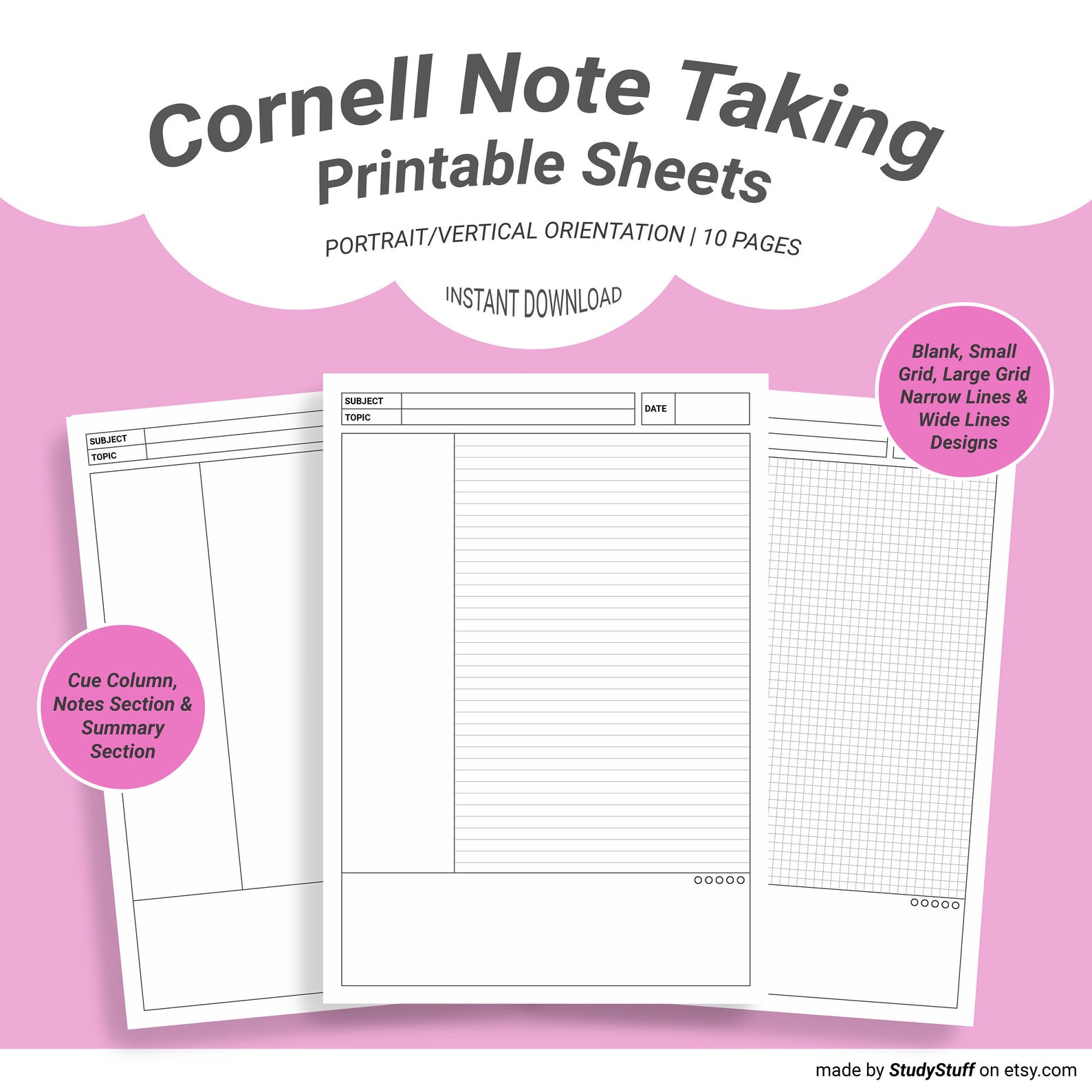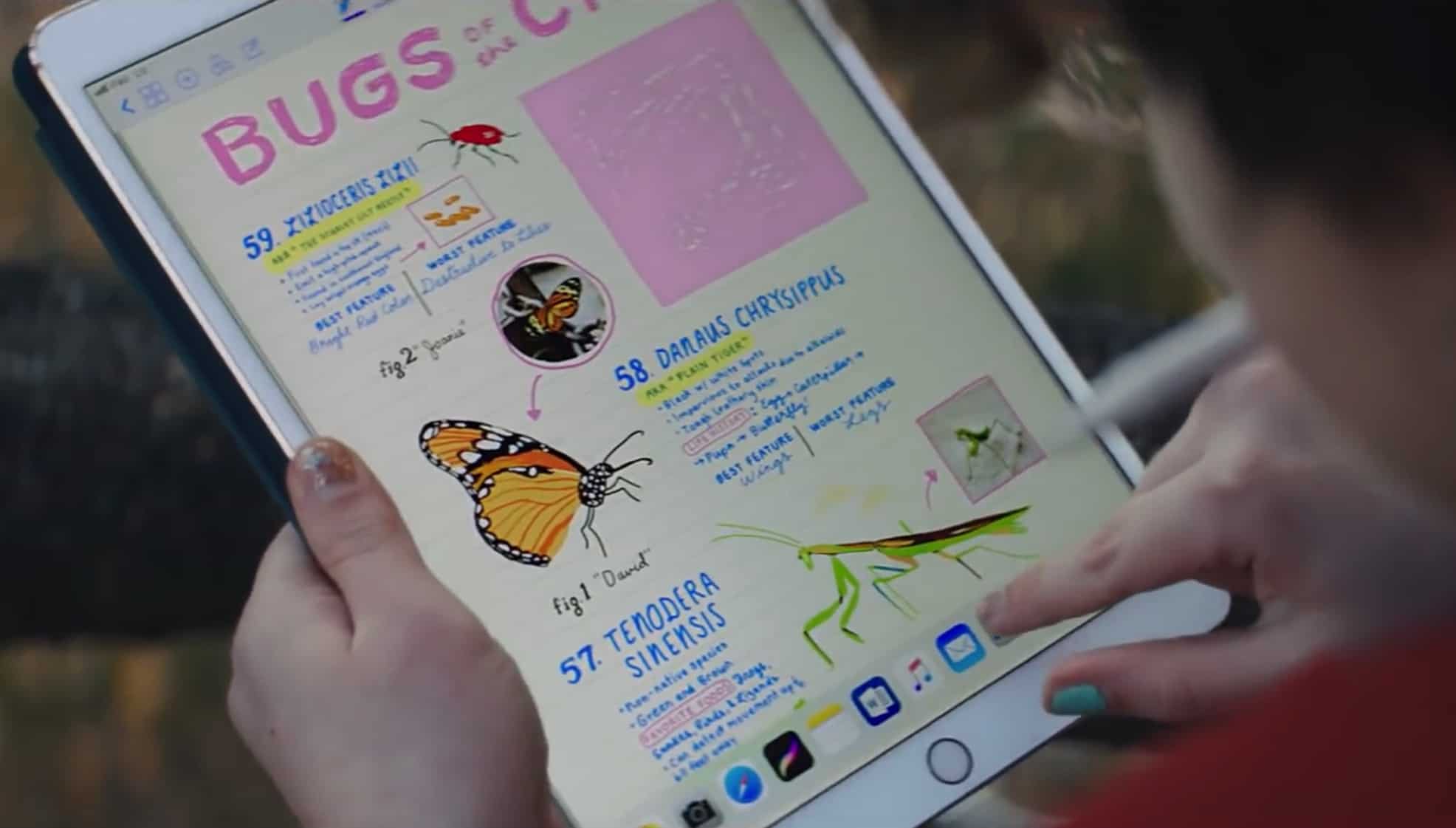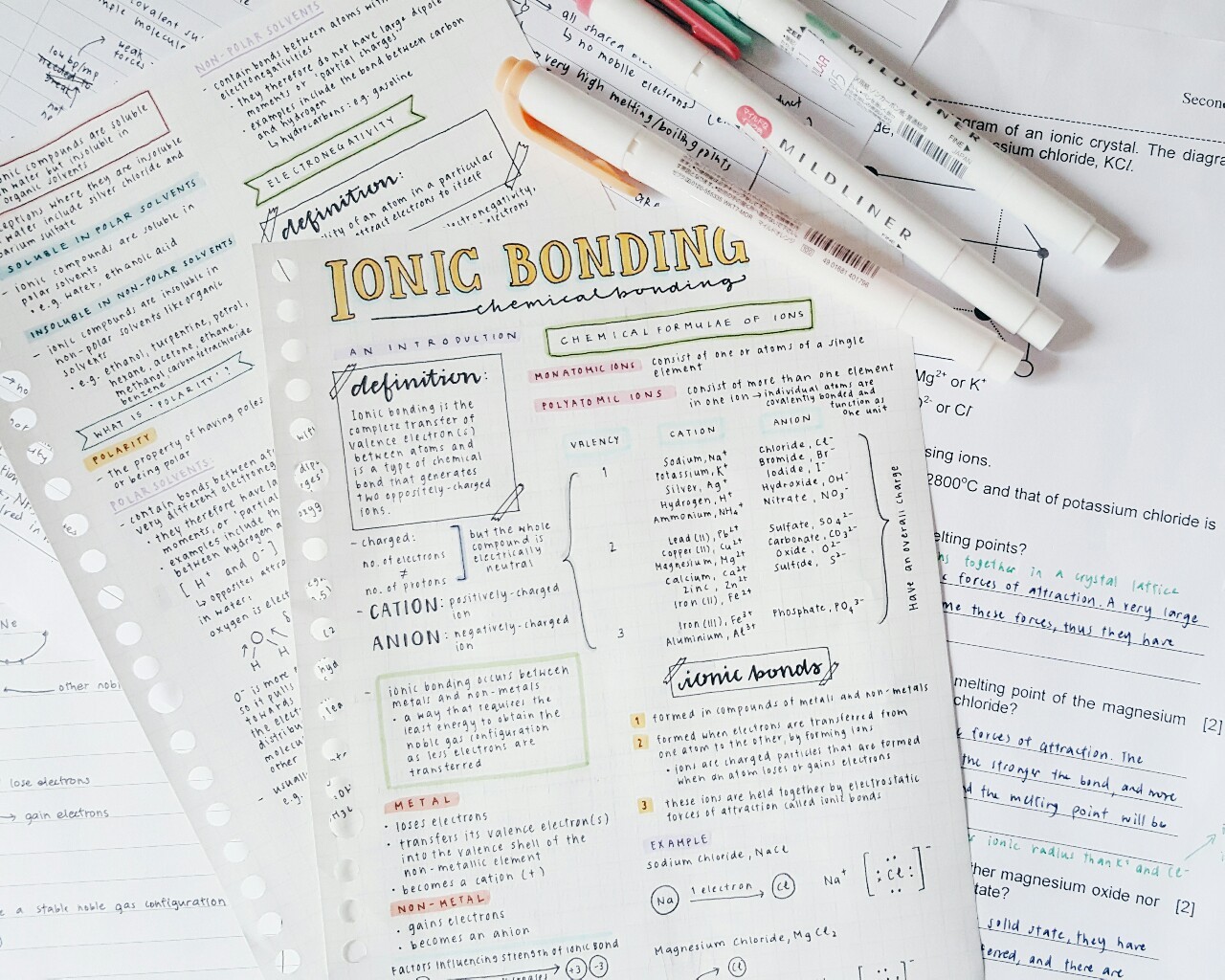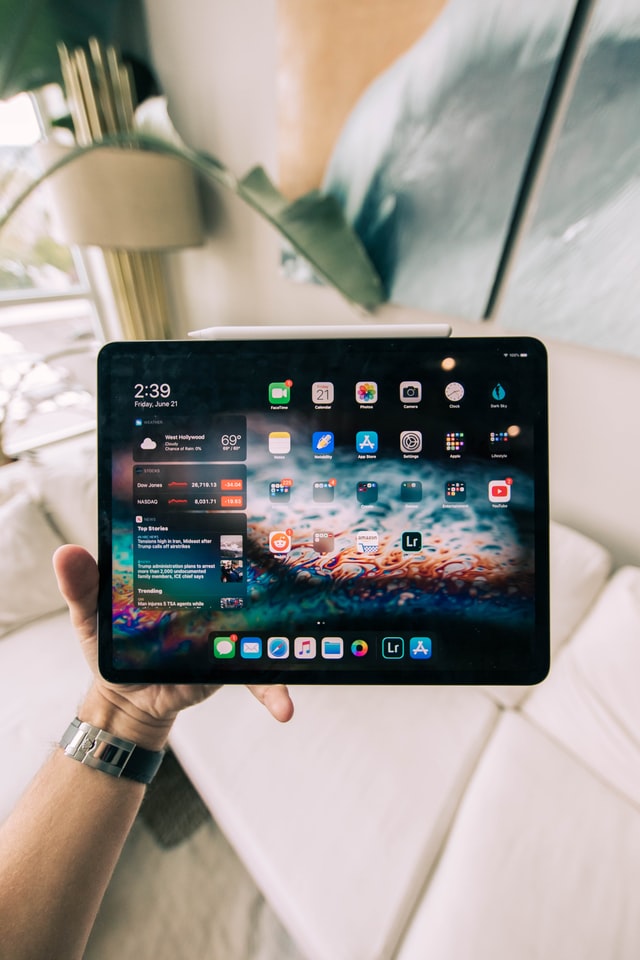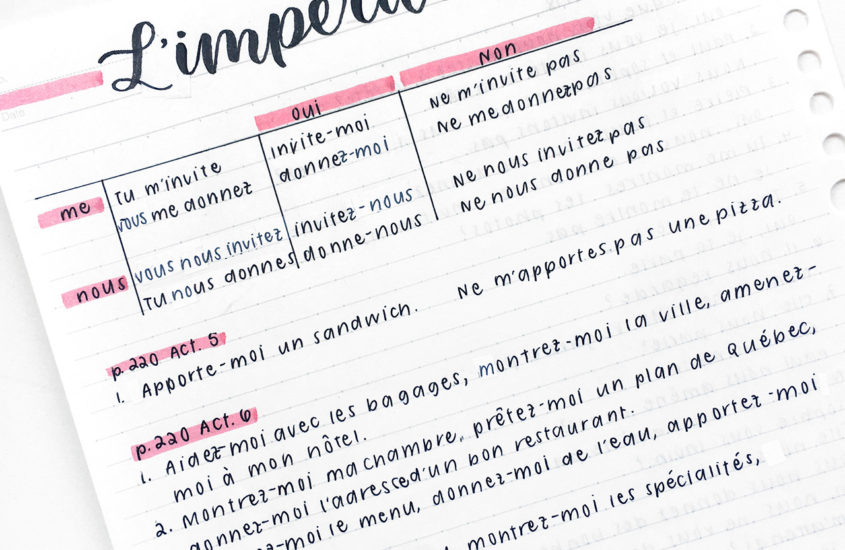
How To Take Notes For Language Learning
There are many different note taking methods that can work well for language learning. To take effective notes for language learning use a popular method such as Cornell notes, outlining notes, mind-mapping notes, charting notes or boxing notes. Unconventional note taking methods for language learning include using post it notes or recording audio notes. While taking language notes, take note of pronunciation of the language, have a bilingual dictionary handy to find definitions and write down vocabulary and phrases that you are very relevant to you.
The three best note taking methods for language learning are explained below but if you want to find out about each one in depth read our article: The 5 Best Note Taking Strategies
1. Cornell Notes For Language Learning
Cornell notes are one of the best note taking methods for language learning because it is a note taking method, summary sheet and study/revision tool all in one. This is because the page is divided into three sections (note taking area, cue column and summaries) which encourages students to process and learn information better.
How To Format Cornell Notes
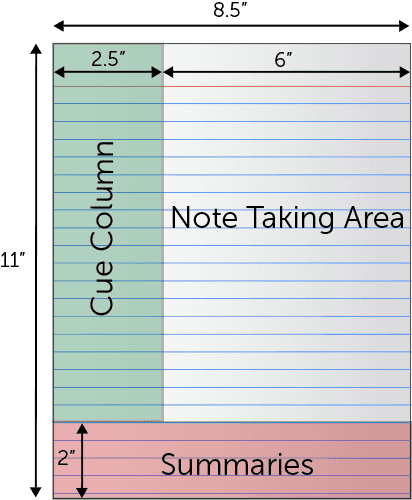
To take Cornell notes for language learning you need to split your page into three sections like the image above.
Note Taking Area
The largest section is the note taking area. In that space you take your notes in a succinct manner during your language class. You should try to paraphrase or use dot points in this section.
Cue Column
The small column on the left is the cue column. In this column you write down questions that you will use to study the information in the notes area at a later time. For example, in the notes section you might take notes on how to conjugate a french verb such as ‘croire’. In the cue column you would write a question or cue such as ‘Conjugate croire for the ‘you’ form in both formal and informal (vous/tu)?’
Summary Section
At the bottom of the page is a row called the summary box. In the summary box you should write a short and succinct summary in your own words of the content in the note taking area. I suggests that you make this an active learning experience and get your memory working by covering up the note taking area with a scrap piece of paper or at least your hands. Write your summary while doing this and then go back and re-read your notes, adding in any relevant information you missed in the summary.
How To Speed Up Taking Cornell Notes
It can take a lot of time to format Cornell notes each time you have a lecture or are taking notes so that is why I have created a Cornell note PDF template which features blank, lined and grid notes as well as a special revision tracker located in the summary box. This template can be used to make physical notes by printing it out or digital notes by using it in a PDF reading and editing app such as GoodNotes or notability and then writing on it with an Apple Pencil or stylus. You can find the vertical version of it here and the horizontal version of it here.
How To Revise Cornell Notes For Language Learning
- Cover up your note taking and summary box with a piece of paper/your hands
- Ask yourself the questions you have written in the cue column
- After answering one question, go back to your notes, read through them and think about how you can improve your response
- Once you have finished revising you can colour in a revision tracker circle (if you have the printable Cornell notes template which you can find here) to make a note of your study progress.
Read Also: How To Learn A Language By Watching Netflix
2. Outlining Notes For Language Learning
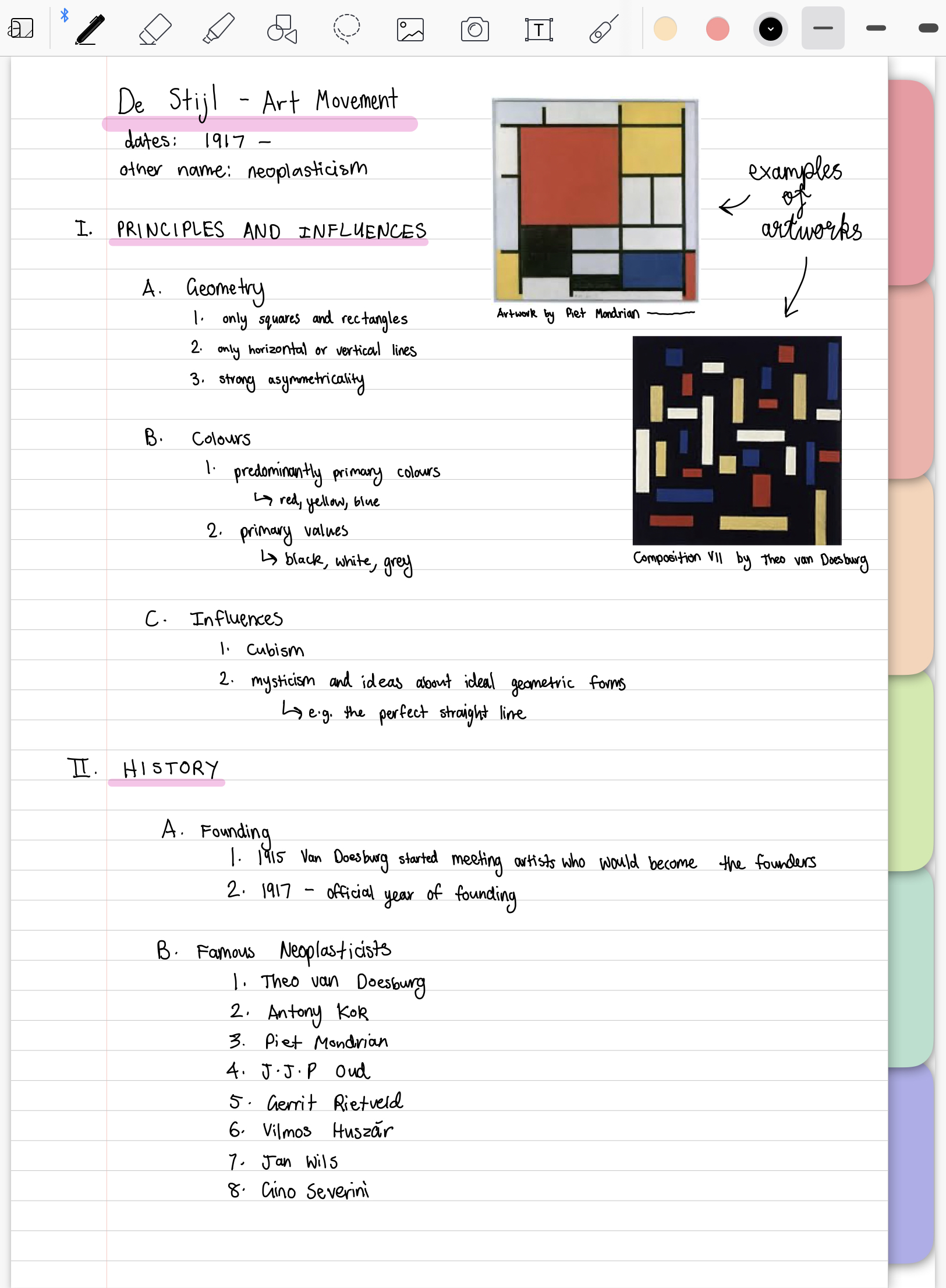
While the image above does not show the outlining method used specifically for language notes, it does give you a good idea of how outlining notes are formatted and how you could adapt it to taking notes in a foreign language!
Outlining notes are great for language learning as they follow a very simple method and ultimately create a sheet of notes that are highly organised and easy to study. This note taking method is great for writing notes about the culture of the foreign language you are learning or to write notes about grammatical structures.
How To Take Outlining Notes For Language Learning
- Read your textbook/listen to information during your class or lecture
- Summarise key information under sub-headings
- Order your information by importance that is indicated by indentations (refer to image above)
- The more detailed, the further the information is indented to the right
- To further format your notes, label the indentations with Roman numerals or letters
3. Mind Mapping Notes For Language Learning
Mind mapping notes are a great note taking method for visual language learners and for showing relationships between information through the arrows that link ideas together. It’s a good note taking method for vocabulary as you can group words together by sub-topics which ultimately makes it easier to remember.
Read Also: The 8 Best Ways To Learn A Language For Visual Learners
How To Take Mind Mapping Notes
- Start with topic/keyword in the centre of the page
- Draw arrows or branches leading from it to more specific information
- Keep on branching out until you have finished taking your notes
Ideas For Mind Mapping Notes For Language Learning
The best way to use mind mapping notes for language learning is to learn vocabulary as mentioned above.
How To Learn Foreign Language Vocabulary Using A Mind Map
- Firstly choose a general topic/theme e.g. Sport
- Then from ‘sport’ you can draw branches out from it to more specific vocabulary e.g. Tennis, Basket Ball, Soccer, Rugby, Cricket etc.
- With each branch you can get more specific e.g. branches off tennis could be tennis ball, tennis player, net, racket, serve, backhand, forehand etc. (obviously all of these words would be in the foreign language you are studying)
This is a really effective way of learning your vocabulary as you are using chunking. Chunking is a fantastic study technique to put information into your short term memory really fast as you are grouping like information. It makes it much easier to commit the new vocabulary to your long term memory.
Colour Code Your Mind Map
Another great idea for your language learning mind map is to colour code it. For each word, write it or highlight it in a colour that you associate with it. For example you might write soccer in black and white, basketball in orange and tennis in green.
Consider Creating A Digital Mind Map
If you have an iPad or Tablet you should consider creating digital mind maps while taking notes for language learning. This is because it gives you increased flexibility to edit and re-arrange your notes into a more succinct and ordered manner. You could create your digital mind map in a digital hyperlinked tabs notebook or on a note taking page in the digital language learning planner!
Unconventional Note Taking Methods For Language Learning

Post It Notes
Post It Notes are a great solution when you are running out of space on your piece of paper and need to add extra information.
Some people like to draw out conjugation tables on post it notes as they are more portable and they can therefore study on the go.
Another creative way to study a language vocabulary is to write individual words on them and then stick them around your house. E.g. your might stick a post it note with ‘le frigo’ on your fridge.
Make Audio Notes
Creating audio recording can drastically improve your speaking skills in a language as you are forced to speak out loud. It’s a great note taking method for auditory listeners as you can listen back to information when studying. You could even collate audio recordings of native speakers to perfect your pronunciation. In addition to this you could take part in an online language video call lesson to perfect your pronunciation and improve your fluency such as the ones offered by Rype or Lingoda!
Note Taking Tips For Language Learners

- Use a printable language learning planner or digital language learning planner to keep your notes organised and all in one place!
- Take note of pronunciation/intonation of the language in your notes. E.g. pairs of different or similar sounds, sentences where some sounds are linked aurally like liaison in French, silent letters, where accent effect sound etc.
- Write down vocabulary and phrases that you are very relevant to you and you know you are going to use yourself in your writing or speaking
- Have a bilingual dictionary with you while note taking or use an online dictionary
- Be an active learner and take notes while listening to podcasts or watching TV, YouTube or Netflix (Yes, you can learn a language by watching Netflix!)
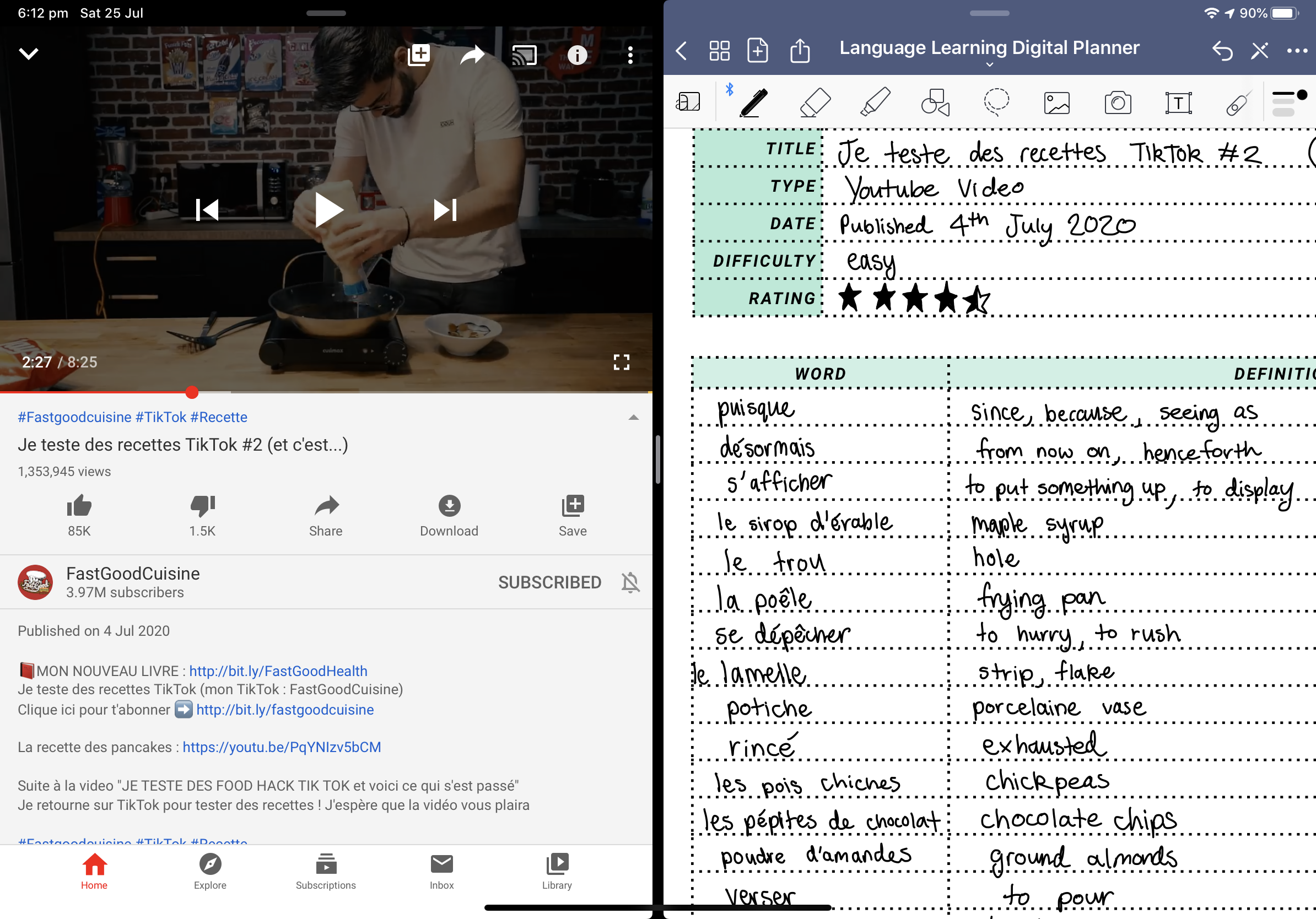
Join more than 1,212,346 people from 192 countries and learn a new language at your own pace at Rocket Languages!
Check Out The Online Courses Below:
Or Join A Live Online Language Learning Class With Real Teachers On Lingoda!
Check Out The Online Courses Below:
Further Reading
If you take notes using your iPad, you need to know these 12 iPad note taking tips! They will make …
The best ways to learn a language without going to classes include: watching foreign language films on Netflix, using a …
To take pretty notes you need to firstly choose a consistent colour scheme. Next you should draw an eye catching …
To take notes on a PDF on an iPad you need to use a note taking or PDF reading app …
To get motivated to do school work one should set SMART goals, work in a motivating environment, break large projects …
If you are working full time and you want to learn a language, you need to make the most of …

